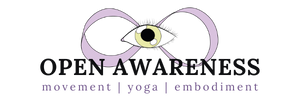22 Feb Tops-Down, Bottoms-Up
What parts of you lie beneath your consciousness?
Do you think about breathing every time you breathe? Probably not. Breathing happens unconsciously.
Same with movement. You don’t have to explain to your hips and legs how to walk each time you take a step. If this was the case, you’d have no time to think of much else. Talk about not being able to chew gum and walk at the same time…
If your body processes so many things beneath the level of your conscious awareness, where does stress fit into the equation?
Sense perceptions come into your brain through your eyes, ears, mouth, skin, nose, etc. Once inside, these sensations are blended into something we can call your present experience. The processing of that experience is sent in two directions within your brain.
It’s sent up to your rational, thinking brain to enter your conscious awareness and down through your much older, subconscious brain to continue through your limbic system.
The trip up to conscious awareness takes much longer than the trip down through your limbic system.
If the trip down registers a threat, your autonomic nervous system is activated in fight/flight. This can all happen before the signal has a chance to reach your conscious awareness. That is, you’re running from the bear before you’re even aware there is a bear.
If the threat is small and you’re not in a sensitive state, your present experience has a chance to reach your rational brain, right behind your forehead, and you’re able to think through the situation. “Oh, it’s not a bear, I was just spooked by the wind. No need to flee!” Your body can now settle back down.
If you’re quite upset, your rational brain might remain offline and your nervous system may maintain an unnecessary fight/flight state, unbeknownst to your conscious awareness.
In fact, when you’re quite upset it’s almost certain you don’t have all the faculties of your rational, thinking brain. In this case, it’s important to take time for yourself to relax so you can interact with your environment as your “highest self.” That is, with your full conscious awareness. There are ways to improve the functioning of this brain/body connection.
The two pathways that your present experience travel in your brain also represent two strategies one can use to manage one’s emotions and reactions. From the rational brain down (tops-down) or from the autonomic nervous system up (bottoms-up).
Various approaches to therapy, like CBT, are effective methods of tops-down regulation. Mindfulness practices and yoga have also been shown to help. The mindful movement we practice in yoga means you’re concentrating your conscious awareness on your physical experience, tying your rational brain to your body.
This week in class, we finish up (De)Stress Month by focusing on bottoms-up regulation. By bringing your usually subconscious breath into consciousness and moving your body in yoga , you’re improving your ability to self-regulate, manage and thrive through life’s certain stressors. Honestly, we’ve been doing this all along.
I hope to see you in one of the three free yoga classes this week!
Love to you,
Quinn
PS
No class next Tuesday, March 2. We are moving up the west coast back to Portland, Oregon!
